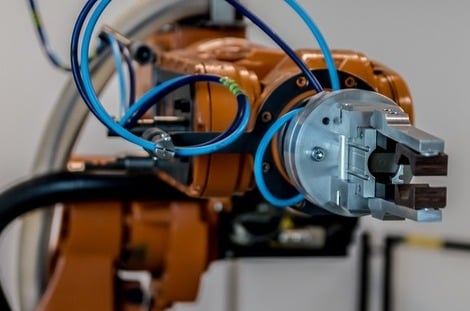In order to stay ahead of the competition, companies must use innovative manufacturing technologies to get better products to market faster. Industry 4.0, a new phase in the Industrial Revolution that focuses on automation, AI, machine learning, interconnectivity, and real-time data, requires additive manufacturing and other innovative processes and tools to support the growing need for niche and customized parts in the growing industries of:
To keep up with the ongoing technology innovations that come with manufacturing today in Industry 4.0, we use the latest 3D printing, molding, and machining technologies, materials, software, and automation. We 3D print and manufacture various parts that are used in electric and conventional gas-powered vehicles, the oil and gas industry, and more.
Based on the requirements of the part and project, our internal process identifies the best industrial manufacturing technology and material solution to efficiently create one part or thousands of custom parts in many shapes, sizes, and materials.

While we have had the capabilities for years, the past several years have shown us huge leaps forward in technological advancement. Our world has become a personalized, on-demand marketplace and additive manufacturing enables us to make more industrial parts faster and better than we could before. Our 3D printing technologies include:
*Parts larger than build envelope can be sectioned for print then bonded back together in post-processing
Our manufacturing solutions allow industrial equipment designers to:
When you need multiple prototypes that provide production material performance
or low volumes of production parts, cast urethane molding offers a cost-effective alternative.
Also known as polyurethane, urethane casting is one of the most versatile
processes to fabricate plastic and rubber-like parts. The urethane molding process has
been used for rapid prototyping for many years to produce high-quality parts.
Plastic injection molding uses thermal principles and pressures to create the parts and components you need at low costs. Our custom injection molding department is an agile team that can shift quickly based on your needs to run prototypes, bridge volumes, or high-volume production.
We handle projects in all different materials for the industrial industry, ranging in volumes from one to 1,000,000 parts or more per year. Our injection mold presses range from 30 tons to 596 tons with barrel sizes of 3 oz to 70 oz for small, medium, and large parts.
CNC Milling
Our 3- or 4-axis CNC milling machines include automatic tool changers that reduce setup and change-over time between operations and parts.
CNC Turning
Our CNC lathe machines have bar feeders and automatic tool changers that allow for seamless production with fewer interruptions and breaks in cycles. Most parts are created with material that comes in bars, rods, and tubes.
5-Axis CNC Milling
We operate the very best equipment in Agiecharmilles Mikron high-speed 5-axis CNC machines. Each machine is optimized for production with robotic pallet and tool change systems. These automation tools, along with IoT sensor technology, allow us to run lights-out production. 5-axis CNC machining is a great option for production machined parts that require multiple setups, complex geometries, or just high-volume repeat production runs.
EDM Machining
We make parts, tooling, and fixtures using our wire EDM, die-sinking EDM, and hole drilling EDM machines. Our EDM wire and sinker machines and processes are Nadcap-approved for non-conventional machining. The EDM equipment we operate is specialized GF Machining Agiecharmilles that leave incredible surface finish results with minimal recast layers.
With our ERP system, we manage part levels from part to sub-assembly to final part assembly for all different industries and customers. 3D-printed, injection mold, and/or machined parts can be assembled with purchased screws, inserts, washers and springs, and other materials to make your complete assembly and allow you to manage one vendor and one part number.
See how we partnered with Vitamix and Carbon to redefine what's possible. We took a legacy, six-piece, injection-molded part design and turned it into a new, one-piece, 3D-printed part.
The Technology House’s (TTH) integrated approach to design, prototyping, and production allows you to bring your concept to market faster and more cost-effectively than virtually anyone else.
Headquarters
10036 Aurora-Hudson Road
Streetsboro, OH 44241
© 2025 The Technology House | Website by SyncShow | Privacy Policy